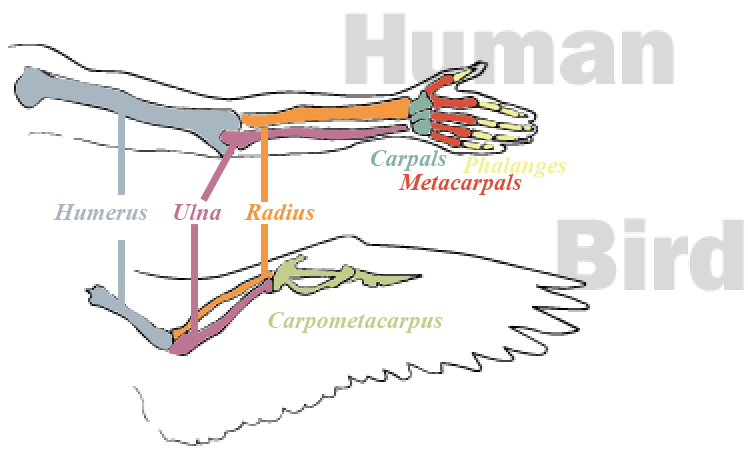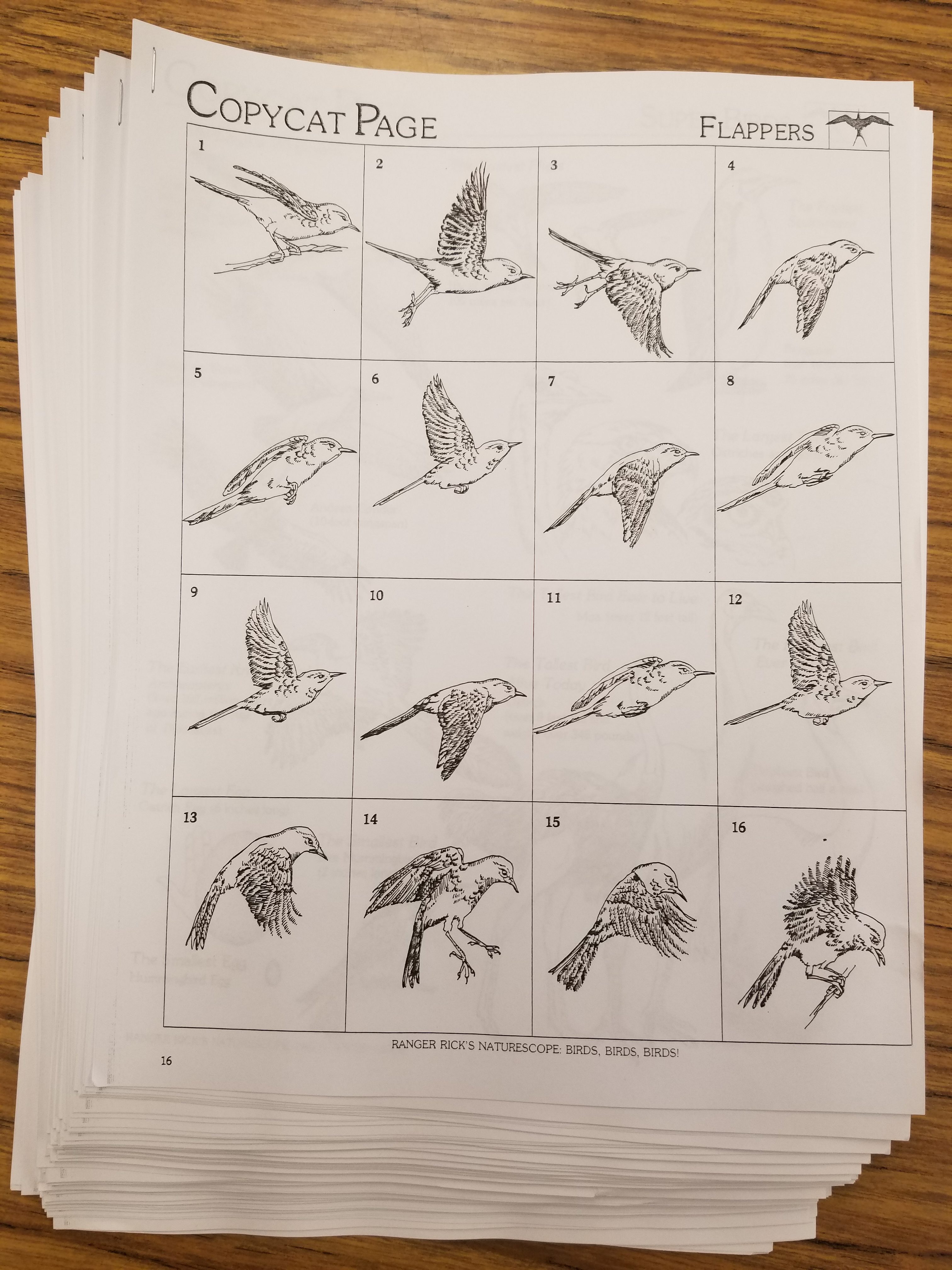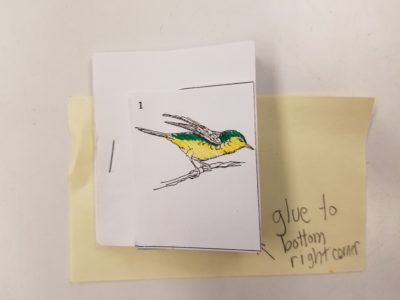There are also some other bird interactives on this site.
Adaptations
Different parts/structures or behaviors that help plants and animals survive.
Flappers
Different birds flap their wings at different rates….here is a chart. Try it! We will use a time to count of 10 seconds. See if you can flap your wings like these birds. What is the fastest you can flap?
| Bird | Wingbeat ever 10 Seconds |
| Crow | 20 |
| Robin | 23 |
| Pigeon | 30 |
| Starling | 45 |
| Chickadee | 270 |
| Hummingbird | 700 |
Bones inside a human arm compared to a bird’s wing.

Here are some videos of birds flying…we will just watch a few minutes of each…not the whole thing.
The first video is showing a group of people flying with some Canadian geese.
Here is a video of a TRAINED eagle (doesn’t live in the wild) that they release from the tallest building and could find its trainer!
(short version….there is a longer, 5 minute version here)
What did you notice about the eagle’s flight?
In the hummingbird video, there are a few special effects that aren’t real in the beginning. Watch for the hummingbird’s tongue in a few places. You will see different types of hummingbirds. Pay special attention to the slow motion part of moving their wings!
The Wandering Albatross is the bird with the largest wingspan. Imagine a bird that can stretch is wings about the same width as our carpet!
The Andean Condor is considered the largest flying bird – heaviest, largest body that can still get itself in the air.
We will also make a “flip” book of a bird flying.
- Each picture is the same bird, just with its wings in a different position. Color each of the pictures with the same parts the same color.
- Cut out each box on the lines.
- Glue each box/bird picture on a card in the corner.
- The teacher will staple them together.
(For Kinder….just do the coloring the first day.)


Birds Eating
We experimented with different “bird beaks” in the Science Lab. Here are some videos:
What about birds feeding their babies?
Futuristic Animal
This is a lesson in adaptations
The story:
A time machine has recently been invented. The MatterMasters Organism Research Institution has decided that it will use the time machine to send a group of animal research scientists millions of years in the future to observe the animal and plant life on Earth at this time.
When you arrive, you find that most of the animals and plants that you know from the present have all disappeared! BUT there are all sorts of new species living in place of the ones you know.
Your assignment is to observe, draw, and analyze one of the animals.
Your job is to report back to MMORI. Your report must include:
- An image (drawn or created)
- A description of what the animal looks like and what animal group it belongs to.
- What animal it is most closely related to.
- A scientific and common name for the animal.
- Describe 4+ different adaptations the animal has (structure or behavior)
- Describe the environment it lives in.
- What does the animal eat?
To help with the creation of the animal, here is a website to try out:
To create your project, we will be using Weebly.com. Weebly is a webpage making online site. Before going to Weebly, you need to have your animal name ready because you are going to use it to name the website.
I will give you your username and password, AFTER you have filled out your Animal Adaptation graphic organizer.
Some notes to help you:
Adaptations
An adaptation is a part on the body of the animal OR it is a behavior (something it does) that helps it survive. Some examples would be:
- webbed feet on a duck help it swim
- pincers on a crayfish help it defend itself
- shells on a snail help them to protect their body
- prehensile tail helps a monkey to grap a hold of branches in trees
- an opposible thumb on a person or primate helps them to pick up things with their hands
Scientific Names
Scientific Names are names that scientists use to categorize and name animals. Go to the San Diego Zoo Animal Bytes page to see examples.
Possible vs. Improbable
Make your animal as POSSIBLE as you can. This means that the animal should NOT be a combination of different types of animals. For example it is IMPROBABLY (not likely) that an animal would evolve from a combination of reptile and mammal and insect. They are TOO different from each other and are not in the same animal groups. STAY WITHIN THE SAME ANIMAL GROUP!! So, mammals, reptiles & birds, fish, amphibians, insects, arachnids, crustaceans (crabs, shrimp, crayfish), mollusks (octopus, squid, clams, oysters), echinoderm (sea star, sea urchin), etc…..
